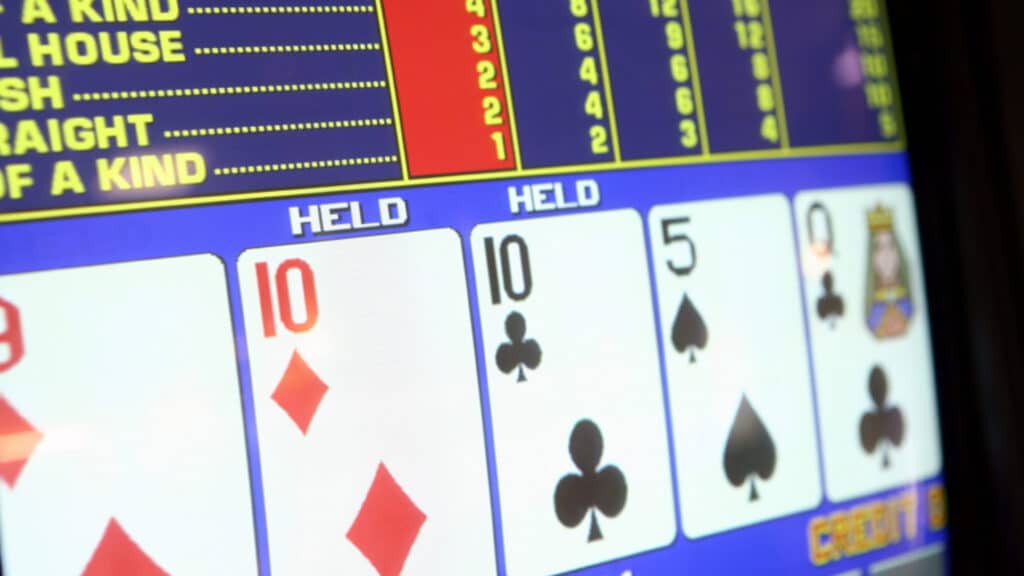Understanding paytables is essential for any gambler looking to maximize their enjoyment and potential winnings in the complex world of online games, especially in online casinos.
Decoding Paytables: Your Guide to Online Game Wins
In the dynamic realm of online casinos, paytables are more than just lists of numbers; they are the blueprints to understanding a game's mechanics, payout structure, and ultimately, your chances of winning. For both novice and seasoned gamblers, mastering the art of navigating paytables is crucial. This article delves into the intricacies of paytables in complex online games, offering a comprehensive guide to understanding and leveraging this vital tool. We'll explore the various components of a paytable, different types of paytables, strategies for effective analysis, and how paytables relate to crucial game elements like Return to Player (RTP) and volatility.
What is a Paytable and Why Does it Matter?
A paytable is essentially a detailed chart or screen within an online game that outlines all the possible winning combinations and their corresponding payouts. Think of it as the game's rule book, specifically focused on how and what you can win. Paytables are predominantly found in slot games, but variations exist in other casino games like video poker and some table games with side bets. Understanding the paytable is not just about knowing what symbols to look for; it’s about grasping the game's underlying payout structure and making informed decisions.
For new gamblers, paytables are the key to demystifying the often-complex world of online games. They provide clarity on how to win, what combinations are valuable, and the significance of different symbols. For experienced players, a deep dive into the paytable can reveal hidden opportunities, optimal betting strategies, and a clearer understanding of a game's volatility and potential profitability. Ignoring the paytable is akin to navigating a maze without a map – you might stumble upon the exit, but understanding the map significantly increases your chances of success.
Key Components of a Paytable
Paytables are rich with information, and understanding their components is the first step to mastering them. Here are the essential elements you'll typically find:
Symbols and their Values
Every online slot game features a variety of symbols, each with its own value. Paytables clearly display these symbols, often categorized into high-value, medium-value, and low-value symbols. High-value symbols, often thematic to the game, offer larger payouts, while low-value symbols (typically playing card symbols like Jacks, Queens, Kings, and Aces) provide smaller, but more frequent wins. Understanding symbol values helps you quickly assess potential payouts during gameplay.
Winning Combinations and Payouts
The core of the paytable lies in illustrating winning combinations and their payouts. This section details how symbols must align on the reels (usually on specific paylines) to trigger a win. Payouts are typically expressed as multipliers of your bet per line. For example, a paytable might state that five 'Wild' symbols on a payline pay out 300x your line bet. Understanding these combinations and payouts is crucial for recognizing potentially lucrative spins.
Paylines or Ways to Win
Paylines are the predetermined patterns on the reels where winning combinations must land to award a payout. Older slot games often feature a limited number of paylines (e.g., 9, 15, or 25), while modern video slots can offer numerous paylines, sometimes hundreds or even thousands. "Ways to win" or "All Ways Pays" mechanics eliminate traditional paylines altogether, awarding payouts for matching symbols on adjacent reels, regardless of their position on the reel. The paytable will clearly indicate whether the game uses paylines or ways to win, and how these mechanics affect payouts.
Bonus Features and Special Symbols
Many modern online slots are packed with bonus features that significantly enhance gameplay and winning potential. Paytables are essential for explaining these features, including:
- Wild Symbols: These symbols substitute for other symbols (except scatters and other bonus symbols) to complete winning combinations. Some wilds come with multipliers, increasing the payout of wins they contribute to.
- Scatter Symbols: Scatter symbols often trigger bonus rounds or free spins when a certain number land anywhere on the reels (they don't need to be on paylines). Paytables detail how many scatters are needed and what bonus they unlock.
- Bonus Symbols: These symbols specifically activate unique bonus games, which can range from simple pick-and-win games to elaborate multi-level features with significant payout potential. The paytable will explain the mechanics and potential rewards of each bonus game.
- Free Spins: A common bonus feature, free spins award a set number of spins where you don't wager but can still win. Paytables specify how free spins are triggered, the number of spins awarded, and any special conditions during free spins (e.g., multipliers, extra wilds).
- Multipliers: Multipliers can significantly boost payouts, either applying to regular wins, bonus feature wins, or during free spins. Paytables clarify when and how multipliers are applied.
- Progressive Jackpots: In progressive jackpot slots, a portion of each bet contributes to a constantly growing jackpot. Paytables usually outline how to win the progressive jackpot, often requiring specific symbol combinations or bonus game triggers.
Understanding these bonus features and special symbols from the paytable is crucial as they often hold the key to unlocking the game's biggest wins.
Types of Paytables: Fixed vs. Dynamic
While all paytables serve the same fundamental purpose, they can be broadly categorized into two types, especially relevant in modern online slots:
Fixed Paytables
Fixed paytables are the more traditional type, where payouts are predetermined and displayed as fixed multipliers of your bet per line. The payouts remain constant regardless of your bet size; however, your actual winnings will increase proportionally with your bet. For example, if a combination pays 100x your line bet, you'll win $10 if betting $0.10 per line, and $100 if betting $1 per line.
Most classic slots and many video slots utilize fixed paytables. They are straightforward to understand and allow players to easily calculate potential winnings based on their stake.
Dynamic Paytables
Dynamic paytables are a feature of some newer online slots, designed to adapt and display payouts in terms of real currency values based on your current bet size, instead of multipliers. As you adjust your bet, the paytable dynamically updates to show the exact amount you stand to win for each combination at your chosen stake. For example, instead of showing '100x', a dynamic paytable might show '$100' if you are betting $1 per spin.
Dynamic paytables offer enhanced clarity, especially for new players, as they eliminate the need to calculate payouts based on multipliers and line bets. They provide an immediate and intuitive understanding of potential winnings in real money terms. However, they essentially represent the same payout structure as fixed paytables, just displayed in a more user-friendly way.
Whether a game uses a fixed or dynamic paytable doesn't inherently change its payout potential, but dynamic paytables can improve the user experience by simplifying payout information.
Strategies for Analyzing Paytables
Simply reading a paytable isn't enough; effective analysis is key to informed gameplay. Here's how to delve deeper:
Identify High and Low Value Symbols
Quickly identify the symbols that offer the highest payouts and those that are less rewarding. Focus on the high-value symbols to understand what combinations to look for to achieve significant wins. Note the frequency of high-value symbols on the reels – are they rare, or do they appear relatively often?
Understand Payline Structures or Ways to Win
Examine the payline patterns if the game uses them. Are paylines straight, zig-zag, or more complex? How many paylines are there? If it's a "ways to win" game, understand how many adjacent reels are needed for a win (usually 3, 4, or 5). This helps you visualize winning opportunities across the reels.
Analyze Bonus Features and their Potential
Carefully study the bonus features. What triggers them? What are the potential rewards? Are bonus features frequent or rare? Understand the mechanics of each bonus game. For example, in free spins, are there multipliers, extra wilds, or other enhancements? Bonus features often provide the biggest win potential in modern slots, so understanding them is paramount.
Compare Paytables of Similar Games
If you enjoy a particular type of slot game (e.g., Egyptian-themed slots, fruit machines, high-volatility slots), compare the paytables of different games within that category. Look for variations in symbol values, bonus features, and payout structures. This comparative analysis can help you identify games with potentially better payout opportunities or features that align with your preferences.
Consider the Minimum and Maximum Bets and Payouts
Paytables also provide information on betting limits. Note the minimum and maximum bets and how they relate to potential payouts. Some games might require a minimum bet to be eligible for certain features or jackpots. Understand the relationship between your bet size and the potential winnings displayed in the paytable.
Paytables, RTP, and Volatility: The Trifecta of Game Understanding
Paytables are intrinsically linked to two other critical concepts in online games: Return to Player (RTP) and Volatility (or Variance). Understanding all three provides a holistic view of a game's behavior and payout characteristics.
Return to Player (RTP)
RTP is a theoretical percentage indicating the average amount of money a game is expected to return to players over a long period. It's usually expressed as a percentage, for example, 96% RTP. This means that, on average, for every $100 wagered, the game is expected to pay back $96 in winnings over a significant number of spins. The RTP is not a guarantee of what you'll win in any single session, but it's a useful indicator of the game's long-term payout tendency. Higher RTP percentages generally suggest better long-term payout prospects.
While the paytable shows specific payouts for combinations, the RTP provides an overall average return expectation. Paytables are designed to deliver payouts that, in aggregate, result in the stated RTP. You usually won't find RTP directly on the paytable itself, but it's often available in the game's information section or easily searchable online.
Volatility (Variance)
Volatility, also known as variance, describes the risk level associated with a game and how frequently and how much it pays out. Games are generally categorized as low, medium, or high volatility:
- Low Volatility: These games tend to pay out smaller wins more frequently. Gameplay is often less risky, with a steadier stream of smaller payouts, but big wins are less common.
- Medium Volatility: These games offer a balance between win frequency and win size. You can expect a mix of smaller and larger payouts at a moderate frequency.
- High Volatility: These games are characterized by less frequent wins, but when they do hit, payouts can be significantly larger. High volatility slots are riskier, requiring more patience and банкролл (bankroll), but offer the potential for substantial rewards in a shorter time if luck is on your side.
The paytable structure contributes significantly to a game's volatility. Games with very high top payouts (e.g., thousands of times your bet) and numerous bonus features that can trigger large wins are often high volatility. Games with more balanced paytables and fewer high-paying features tend to be lower volatility.
Understanding the interplay between paytables, RTP, and volatility is crucial for choosing games that align with your risk tolerance and playing style. If you prefer frequent smaller wins and lower risk, opt for low volatility games with moderate paytables. If you seek the thrill of chasing big wins and are comfortable with periods of less frequent payouts, high volatility games with more aggressive paytables might be more appealing.
The Psychology of Paytables: Enticement and Engagement
Paytables are not just mathematical charts; they are also carefully designed psychological tools to entice players and maintain engagement. Several psychological principles are at play:
The Allure of Big Numbers
Paytables prominently display large potential payouts, especially for top symbol combinations and jackpots. These big numbers create excitement and the illusion of easily attainable riches, even though the probability of hitting these top payouts might be very low. The sheer visual impact of a 10,000x payout listed on the paytable is designed to be psychologically appealing.
The Promise of Bonus Features
The detailed descriptions of bonus features in paytables generate anticipation and excitement. Features like free spins, multipliers, and bonus games promise enhanced winning opportunities and a break from the base game, making the game more engaging and potentially more rewarding. The paytable essentially 'sells' the entertainment and winning potential of these features.
Clarity and Transparency (to a Degree)
Paytables offer a sense of clarity and transparency in an otherwise random game. By laying out the rules of winning and payouts, they provide players with a feeling of understanding and control, even though the underlying game mechanics are still based on chance. This perceived transparency can build trust and encourage continued play. However, it's important to remember that paytables don't disclose the probabilities of hitting specific combinations, only the payouts if they occur.
Reinforcement of Near Wins
Paytables, combined with game design, often create "near win" experiences. For example, almost landing a high-paying combination can be psychologically reinforcing, making players feel they were close to a big win and encouraging them to keep playing. Paytables highlight what could have been won, even when a spin is not actually a winning one.
Understanding these psychological aspects is important for responsible gambling. Recognize that paytables are designed to be enticing, and the odds are always in the casino's favor. Use paytables to make informed decisions, but always gamble responsibly and within your means.
Advanced Paytable Navigation for Experienced Gamblers
Experienced gamblers can leverage paytable knowledge for more strategic gameplay:
Identifying Value in Bonus Features
Experienced players go beyond just noting bonus features; they assess their true value. This involves understanding the potential average payout of a bonus feature relative to the base game. Some bonus features, despite sounding exciting, might not significantly improve the overall RTP or payout potential compared to simply playing the base game. Analyze the paytable descriptions of bonus features to gauge their real worth.
Paytable Discrepancies and RTP Reality Checks
Experienced players understand that the paytable is a theoretical construct and RTP is an average over the long run. Short-term results can vary significantly. They look for discrepancies between seemingly generous paytables and the stated RTP. A very high top payout might be enticing, but if the RTP is relatively low, it suggests that those big wins are extremely rare, and the game might be less rewarding overall in the long term.
Volatility-Based Game Selection Using Paytables
Experienced gamblers use paytables to infer a game's volatility, even if it's not explicitly stated. Games with clustered high-value symbols, numerous high-paying bonus features, and significant differences between low and high symbol payouts are often indicators of high volatility. Conversely, games with more evenly distributed symbol values and simpler bonus features might suggest lower volatility. Use paytable analysis to select games that match your preferred volatility level and банкролл (bankroll) management strategy.
Exploiting Paytable Information for Betting Strategies
While no strategy can overcome the house edge inherent in casino games, experienced players can use paytable information to refine their betting strategies. For example, in games where bonus features are crucial for big wins, they might adjust their bet size to maximize their chances of triggering the bonus (within their банкролл (bankroll) limits). Understanding the paytable helps in making informed decisions about bet sizing and game selection based on payout potential and volatility.
Conclusion: Paytables as Your Game Navigation Tool
Navigating paytables is a fundamental skill for anyone engaging with online casino games. They are more than just payout charts; they are comprehensive guides to understanding game mechanics, potential winnings, bonus features, and the underlying payout structure. For new gamblers, paytables offer essential clarity and demystification. For experienced players, they provide a tool for strategic game selection and deeper gameplay analysis.
By mastering the art of reading and analyzing paytables, you empower yourself to make informed decisions, choose games that align with your preferences and risk tolerance, and ultimately enhance your online gambling experience. Remember to always gamble responsibly, using paytable knowledge as a tool for informed entertainment, not a guarantee of profit. The allure of online games lies in the excitement and potential rewards they offer, and a well-understood paytable is your map to navigate this dynamic landscape.
External Resources:



